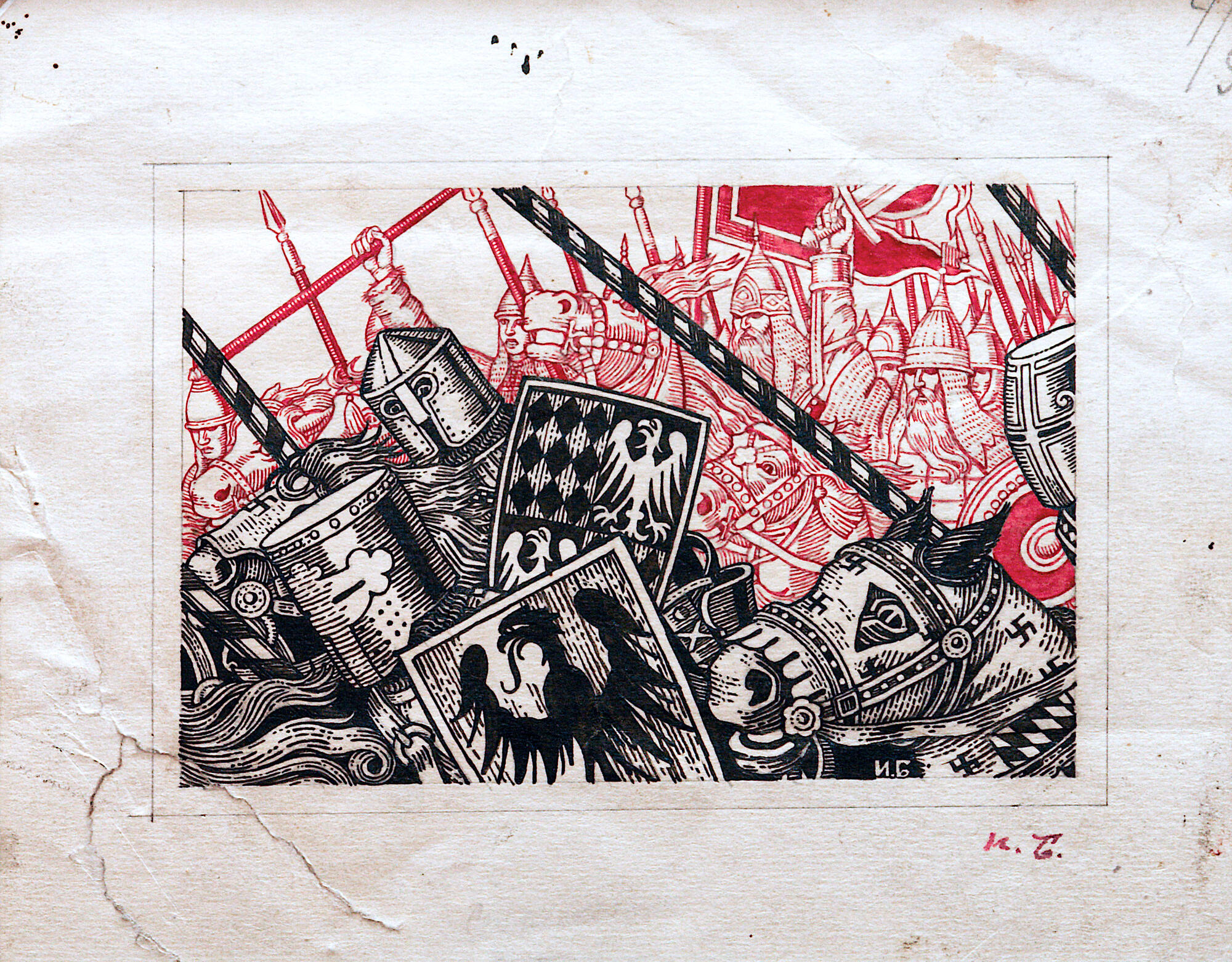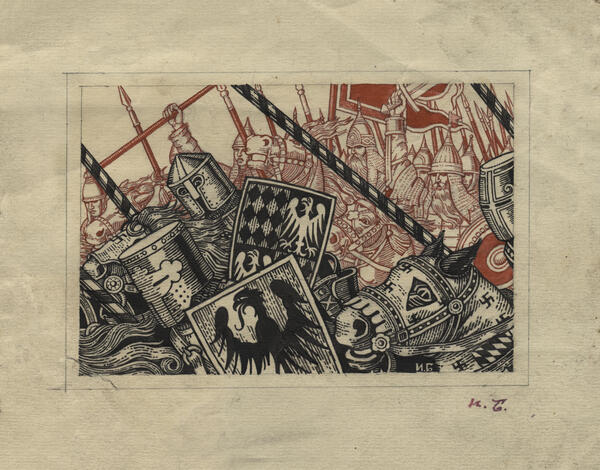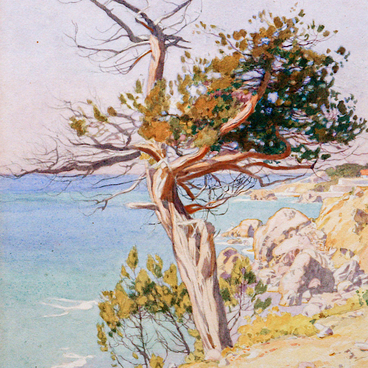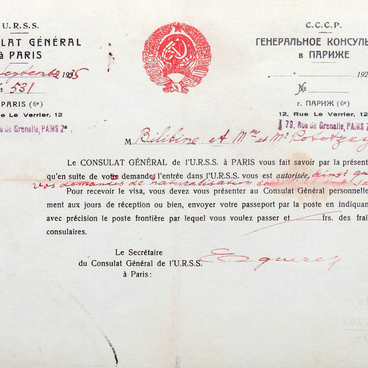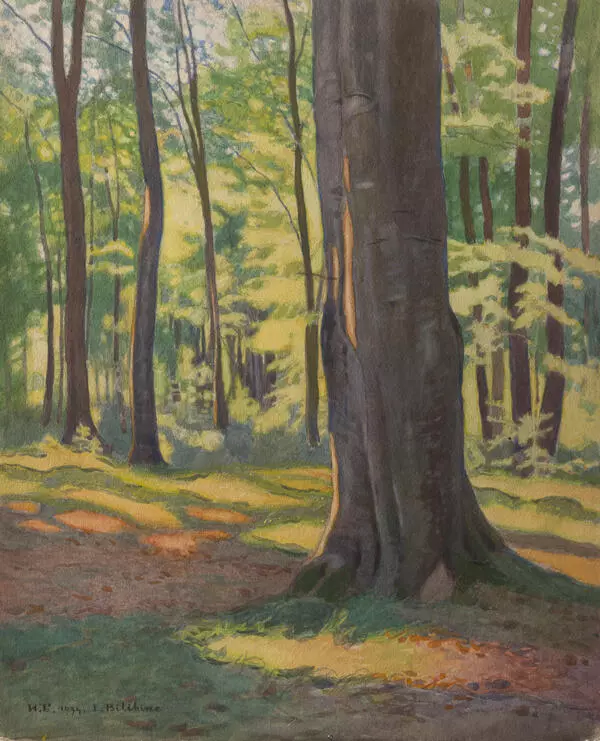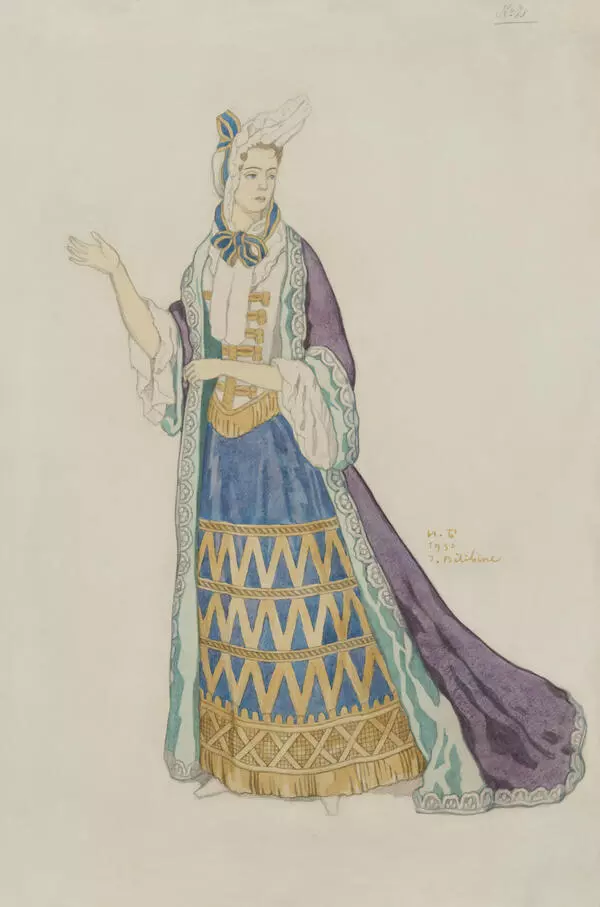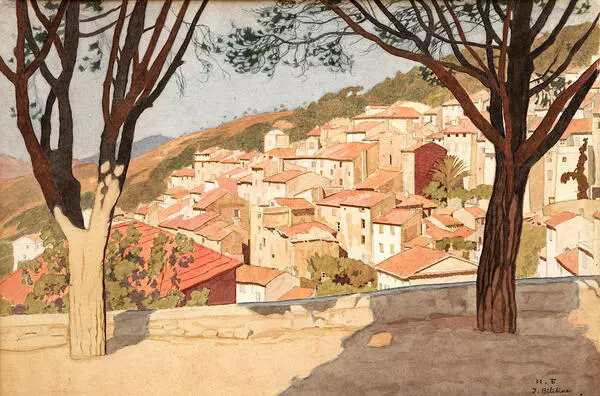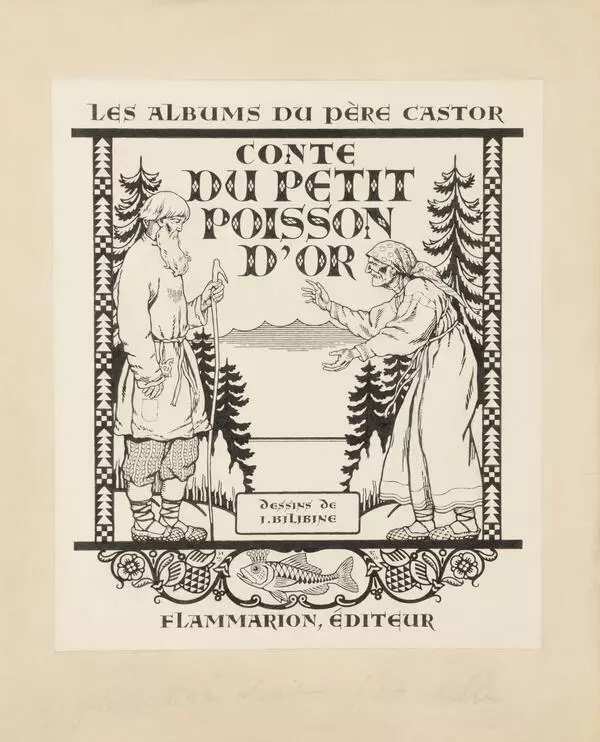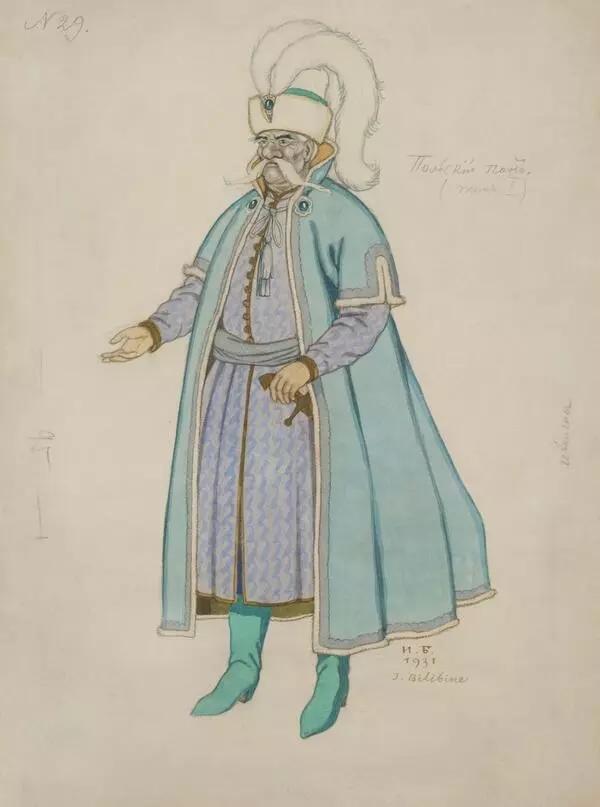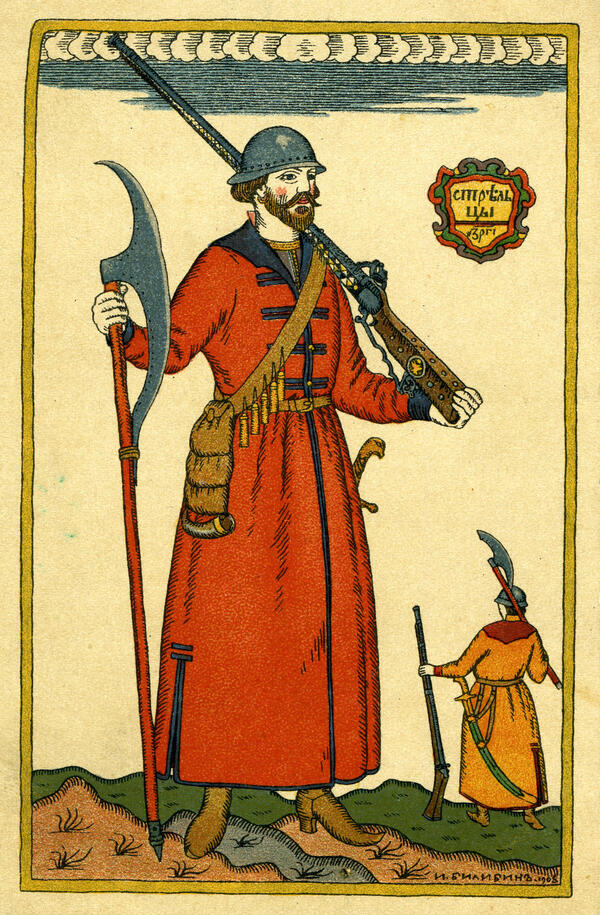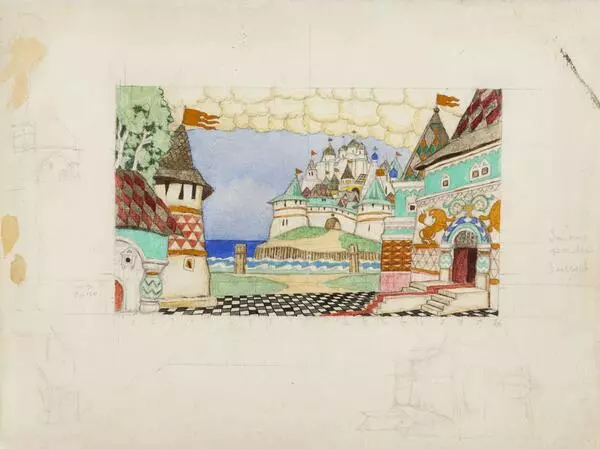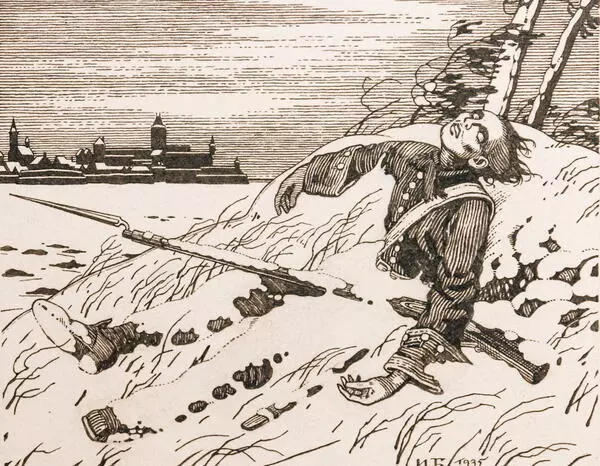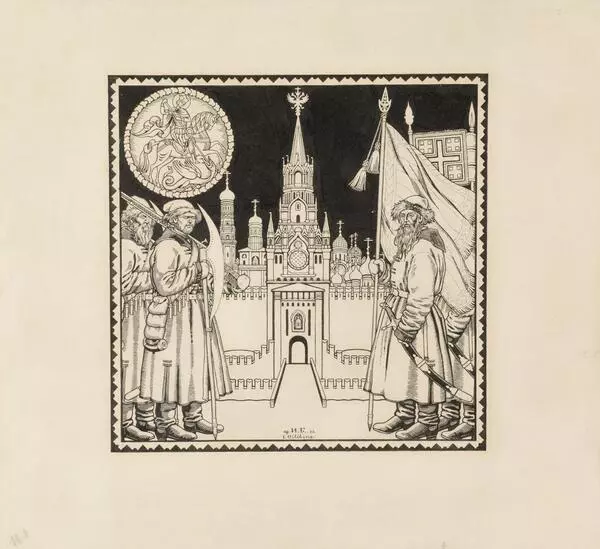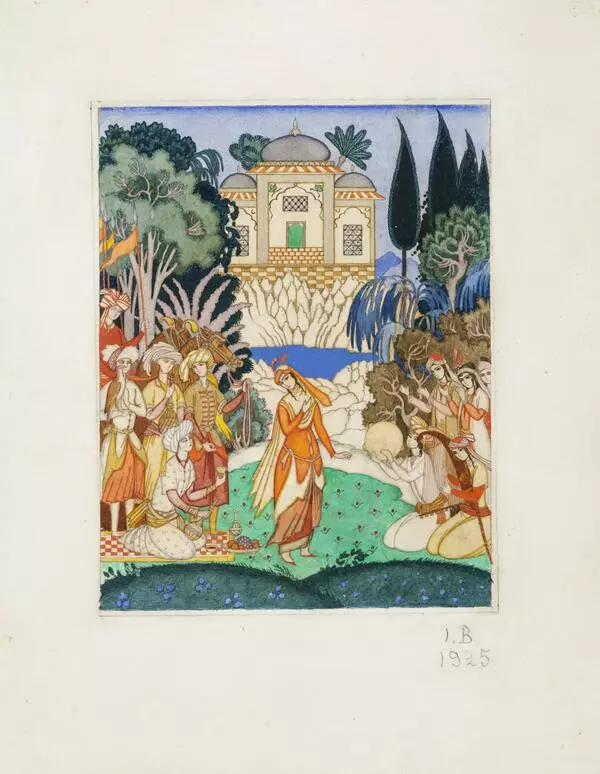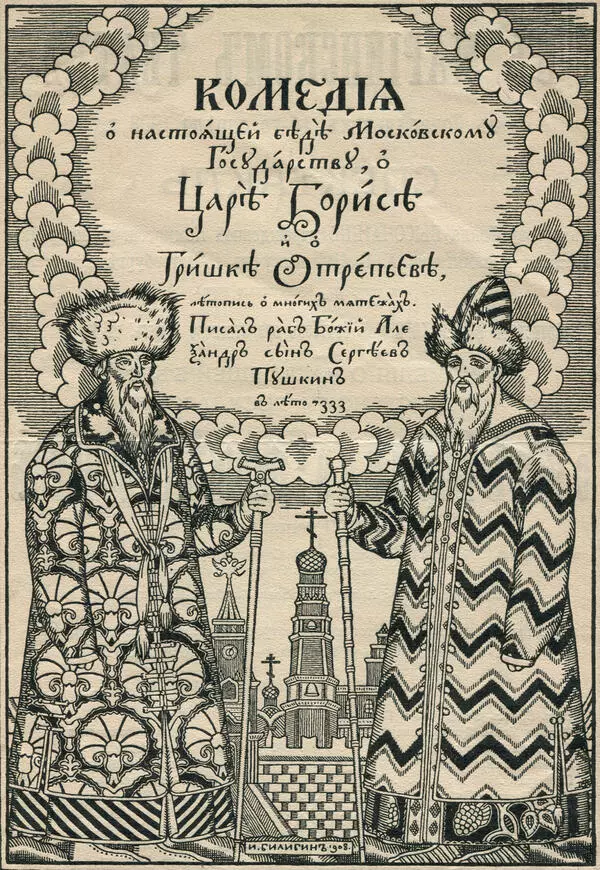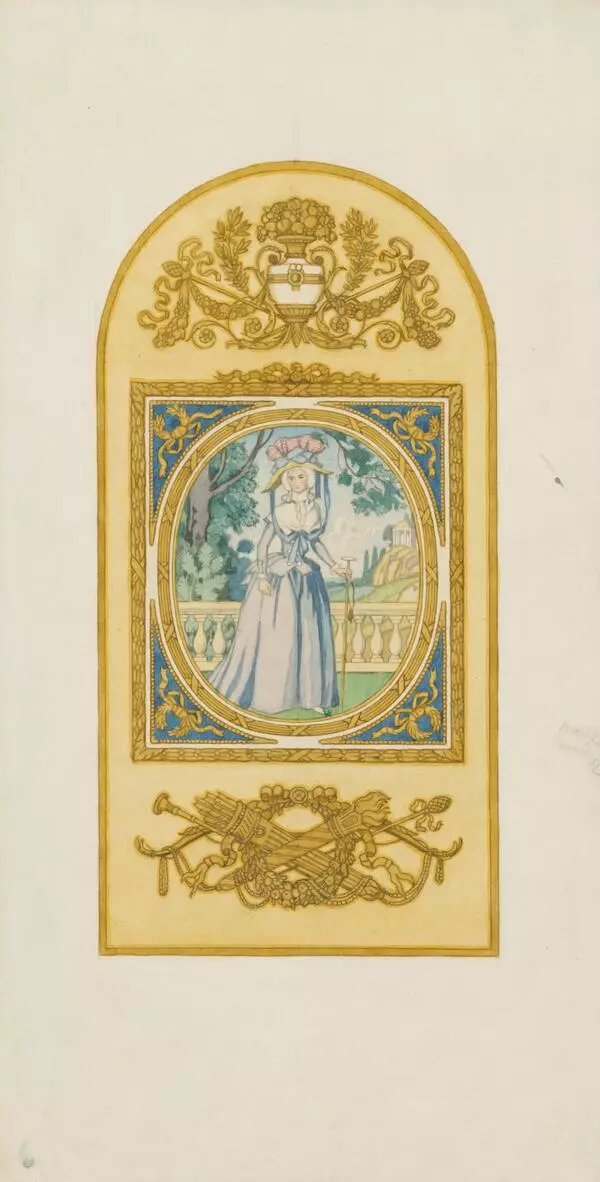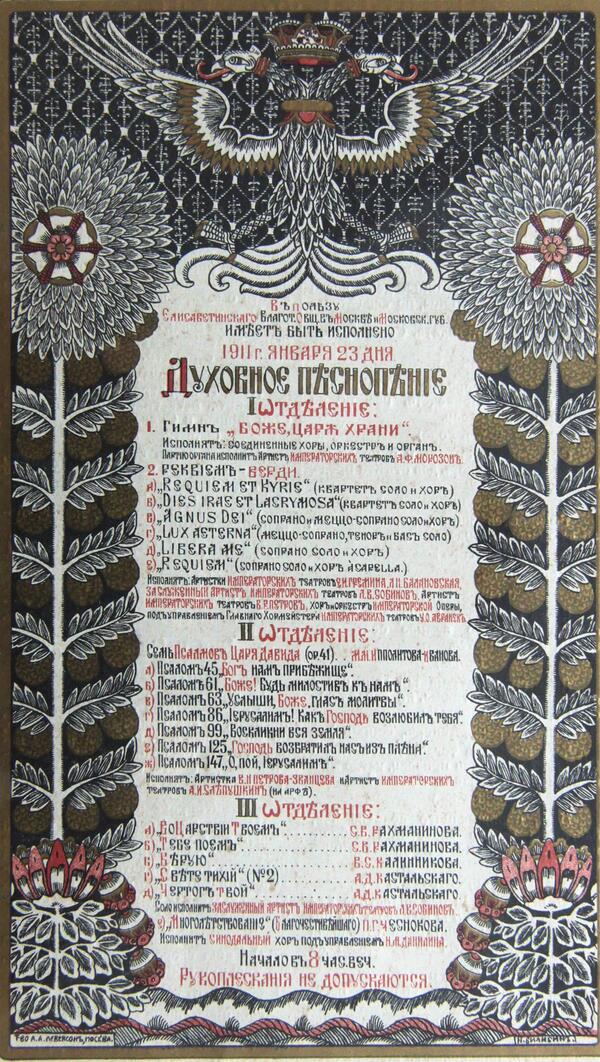The last work of Ivan Yakovlevich Bilibin was the preparatory drawing “Russian Bogatyrs Chase Knights Away” for the epic “Duke Stepanovich”. A month and a half before his death, the artist wrote,
1 / 2
Heroic Past of the Russian People
Время создания
november, 1941
Место создания
Leningrad
Размер
16x20 cm
Техника
paper, graphite pencil, watercolor, ink
Коллекция
2
Открыть в приложении#2
#7
The book should be published when the victorious piece comes, the book about our epic and heroic past.
#8
After returning to his homeland, Ivan Yakovlevich Bilibin lived in Leningrad. On June 23, 1939, Professor Bilibin was awarded the degree of Doctor of Arts. In those years, the artist was working on illustrations for the book “The Tale of The Capital City of Kiev and the Russian Bogatyrs”. Together with Sergei Mikhailovich Eisenstein, he was deeply preoccupied with the film “Ivan the Terrible” and prepared a personal exhibition dedicated to the 40th anniversary of his artistic career. However, subsequent events ruined all his plans.
In the first months of the Great Patriotic War, in September 1941, the People’s Commissar of Education of the Russian Soviet Federative Socialist Republic Vladimir Petrovich Potemkin, realizing the importance of Bilibin’s outstanding talent for Russian art, told him to evacuate with his family deep into the country. Bilibin firmly replied,
In the first months of the Great Patriotic War, in September 1941, the People’s Commissar of Education of the Russian Soviet Federative Socialist Republic Vladimir Petrovich Potemkin, realizing the importance of Bilibin’s outstanding talent for Russian art, told him to evacuate with his family deep into the country. Bilibin firmly replied,
#9
You do not flee from the besieged fortress, you defend it.
#10
With unshakable pride and courage, he endured all the hardships, tried with all his might to support the people around him, distract them from the terrible reality with stories about fascinating journeys. In October, he left his dilapidated apartment to live in the building of the Academy of Arts, where some professors and teachers settled. In early December, the artists who were called from the front for one and a half to two months defended their graduation works. Ivan Yakovlevich, a member of the State Examination Commission, tried to show with all his appearance that young artists should care for their artistic future.
In 1942, while working on an illustration of Russian bogatyrs, Bilibin felt that his strength was leaving him. Without starting to color in with watercolor paints, he put a cross at the top of the sheet in the margins. The fate that had previously favored Bilibin this time was ruthless. On the night of the eighth of February, Ivan Yakovlevich was gone — he died of hunger, without ever seeing the victory. The artist was buried in the mass grave of professors of the Academy of Arts on Decembrists’ Island.
In 1942, while working on an illustration of Russian bogatyrs, Bilibin felt that his strength was leaving him. Without starting to color in with watercolor paints, he put a cross at the top of the sheet in the margins. The fate that had previously favored Bilibin this time was ruthless. On the night of the eighth of February, Ivan Yakovlevich was gone — he died of hunger, without ever seeing the victory. The artist was buried in the mass grave of professors of the Academy of Arts on Decembrists’ Island.
#6
Ministry of Culture of the Russian Federation
читать дальшескрыть
00:00
00:00
1x
Heroic Past of the Russian People
Время создания
november, 1941
Место создания
Leningrad
Размер
16x20 cm
Техника
paper, graphite pencil, watercolor, ink
Коллекция
2
Открыть в приложении
Поделиться
